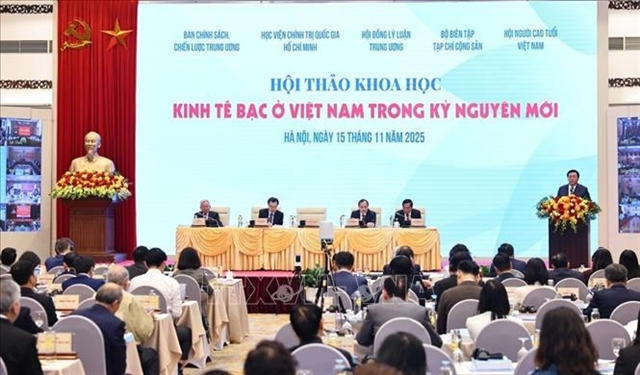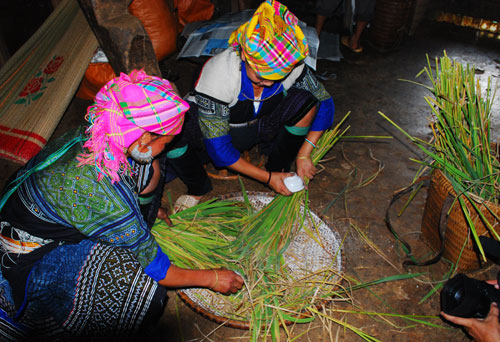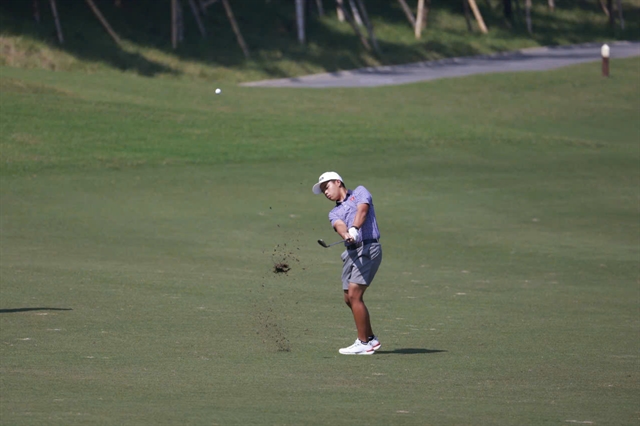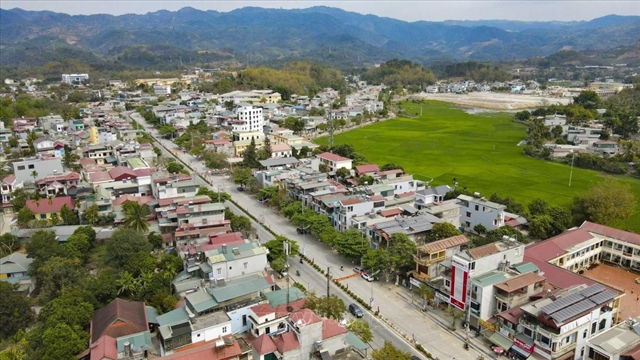 Life & Style
Life & Style

YÊN BÁI — The magnificent terraced rice fields in Mù Cang Chải District in the northern mountainous province of Yên Bái has been officially recognised as a 'Special National Heritage' by the Government.
Although the decision to list the area among the national heritages was made two years ago, due to the pandemic, the award ceremony only took place last week, organised by the Yên Bái Provincial People’s Committee.
Alongside the “Special National Heritage” title, lễ mừng cơm mới or the 'New Rice Celebration' – a traditional ritual of ethnic Black Mông people – has also been recognised as 'National Intangible Cultural Heritage' by the Ministry of Culture, Sports and Tourism.
About 300km northwest of Hà Nội, these rice paddies have gained international fame for their impressive angles in a topographically challenging region. Each year, the colours change from green (in late spring and summer) to yellow (in October) as the rice ripens.

|
| In 2019, the vibrant place was named among 'The Most Colourful Places in the World' by Condé Nast Traveler. — VNS Photo Thúy Hằng |
According to the district’s culture authority, the Special National Heritage site covers an area of 800ha in six communes including La Pán Tẩn, Chế Chu Nha, Dế Xu Phình, Kim Nọi, Mồ Dề and Lao Chải.
In 2019, the vibrant place was named among 'The Most Colourful Places in the World' by Condé Nast Traveler.
The magazine also suggests people should visit in the beginning of October, when the rice harvest begins, and stop by twice: once early in the morning before the crowds arrive, and a second time at sunset.
In 2020, the global travel site Big 7 Travel listed Mù Cang Chải among its 50 most beautiful global destinations.
“When you imagine magnificent Asian rice fields swirling on the slopes of velvet green hills, you’re picturing Mu Cang Chai, Vietnam," Big 7 Travel wrote.
"Centuries of careful cultivation have shaped what is easily some of the most beautiful rice terraces in the world."
Mù Cang Chải is also full of hiking trails and vibrant local culture. Mù Cang Chải provides a unique look into their way of life, it added.
The terraced fields have been created and cultivated by Black Mông people -- the primary residents in the area, over centuries.
Associated with the time when the rice ripens every October, the Black Mông organise the 'New Rice Celebration' – a traditional ritual to thank Heaven and Earth, and their ancestors for favourable weather, for a bumper crop, for a good year, and for health for everyone.

|
| Two Mông women select the newly harvested sticky rice grains to steam sticky rice for the New Rice Celebration. — Photo yenbai.gov.vn |
Only the newly harvested and best sticky rice grains have been selected to steam sticky rice to offer to Heaven and Earth, and the ancestors. Depending on the budget of each family, the new rice celebration may also include buffalo meat and pork. The Black Mông people only eat their newly harvested rice after the celebration.
Speaking at the title-granting ceremony, Deputy Minister of Culture, Sports and Tourism Hoàng Đạo Cương said that Yên Bái Province needs to preserve the whole area as it is, to maintain its fame as a domestic and international tourist destination.
He also suggests the province promote the 'New Rice Celebration' as a unique community tourist product to help to improve the life of local people.
Chairman of the Yên Bái Provincial People’s Committee Trần Huy Tuấn said the province has orientated to develop the green tourism associated with rich ethnic identity.
“The province is striving to become a top destination in the country’s northwest region,” he said. VNS




